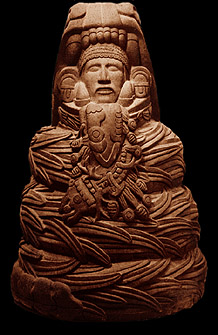 |
|
Quetzalkoatl was a god and a culture bringer
of the Maya cultures and the Aztecs.
Quetzalkoatl is also known with the names
Kukulcan and Gucumaz. Based on tradition, Quetzalkoatl came
to the Aztecs from heaven and founded the Aztecs empire. From there
he flew on a huge beating ship over the sea. He said that he
would return, making the Spanish conquest of CentralAmerica possible
because the Aztecs thought they were the returning gods.
|
Every year, on
summer solstice,
hundreds of curious people, gather to view the impressive spectacle
in Chichen Itza.
At "El Castillo" - the pyramid of Kukulcan.
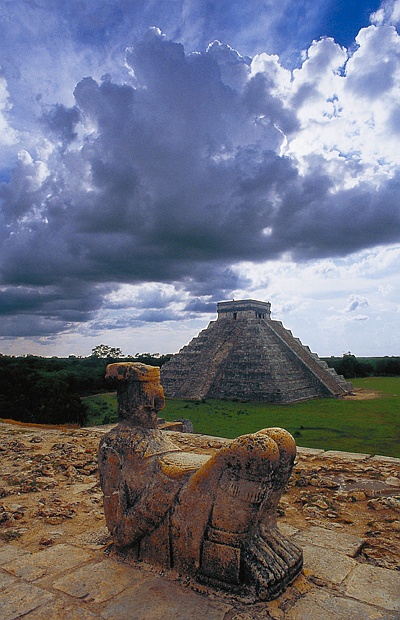
Just as most of the other pre-columbian buildings, it was built on
the same
astronomical-astrological guidelines. The total of 30m height, four-sided
pyramid has nine terraces
and four stairs that symobolize the nine heavens and the four heavenly
directions. Each of the
four stairs has 91 steps, therefore making a total of 364 and together
with the Platform as
the last step 365, corresponding to the number of days in a year.
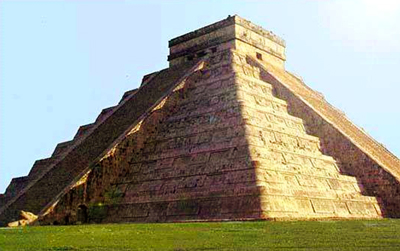
The Kukulcan Pyramid is the
place of a spectacular apparation on the same-day and
same-night turnarounds (21/3 and 21-22/9): The sun incursion on both
these mid-days till sunset
throws a shadow line of the corners of the nine pyramid terraces on
the north-west wall of the
staircase and creates a line with snake heads to the top of the pyrmaid
- symbol of the rising Kukulcan.
It is the symbol of the origin of the
feathered snakes.
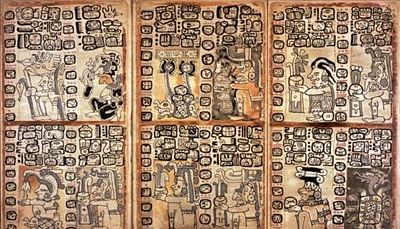
The Maya chronology was based on
a highly developed
calendar system. The year began on
16th June when the sun crosses the zenith and was made up of 365 days;
364 days where
divided in 28 weeks each having 13 days. The new year started on the
365th day. Furthermore,
360 days were divided into 18 months each have 20 days. The rows of
weeks and months ran
independently of each other and in parallel. Every 260 days though,
this means 13 multiplied by 20,
week and month started on the same day. Although the Maya calendar looks
complex, it once was
the most exact calendar in the world before the introduction of the
Gregorian Calendar in the 16th century.
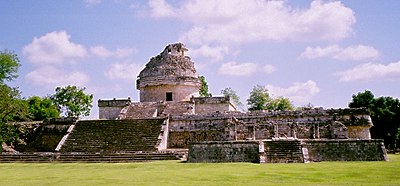
The observatory in Chichen Itza.
The corridor travels spirally into the inside of the round building
where the two-level
platform is located. Sunlight comes through the thin window slits into
the center of the building
for a few seconds twice a year. It was in this way that the Maya priests
determined time.
The calendar system from Maya
|




